

First, let’s outline the economic and practical arguments for gravel.
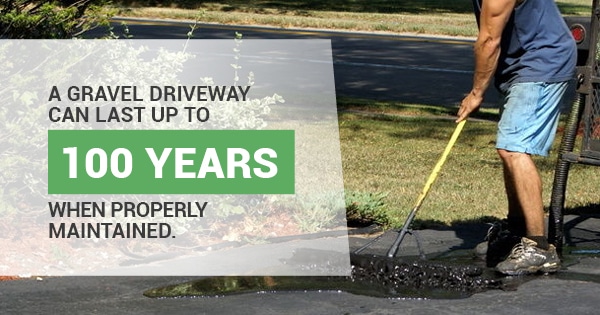
Gravel is more porous than asphalt, concrete, or solid stone. That’s good for two reasons:
Gravel is more affordable than asphalt or concrete, and its not particularly close.
Depending on the gravels quality, the amount of preparation required, and other site-specific factors, your driveway could cost anywhere between $0.50 and $4 per square foot. (Ours came out to just over $0.50 per square foot.)
Asphalt driveways cost $2 per square foot at minimum; $4 to $6 per square foot is more realistic. Concrete driveways cost more still.
Gravel is a low-maintenance material. It’s basically inert, it responds well to freezing and thawing, and it’s easy to repair without professional help.
By contrast, asphalt requires resealing every three to five years, depending on climate and intensity of use. That’s a $400-per-job investment, on average, and more for longer driveways. It’s a messy job too – one best left to the professionals.
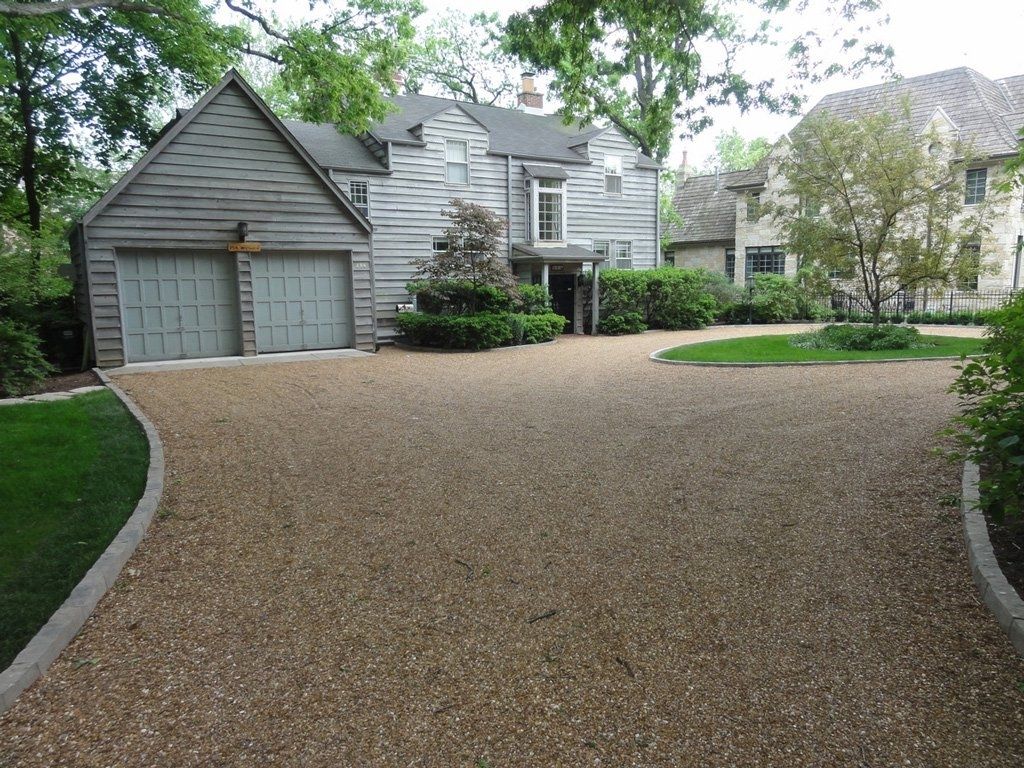
In theory, gravel lasts indefinitely. In practice, it washes away or subsides enough to require periodic resurfacing. But a level, well-maintained gravel driveway can last decades without a complete overhaul. When the time does finally come, it’s a lot cheaper.
Gravel’s aesthetic is more utilitarian than arresting, but that’s not necessarily a bad thing. Depending on the color and texture, gravel blends well with a wide variety of home styles, exterior colors, and landscaping elements – from xeriscaping and other native landscapes to formal gardens.
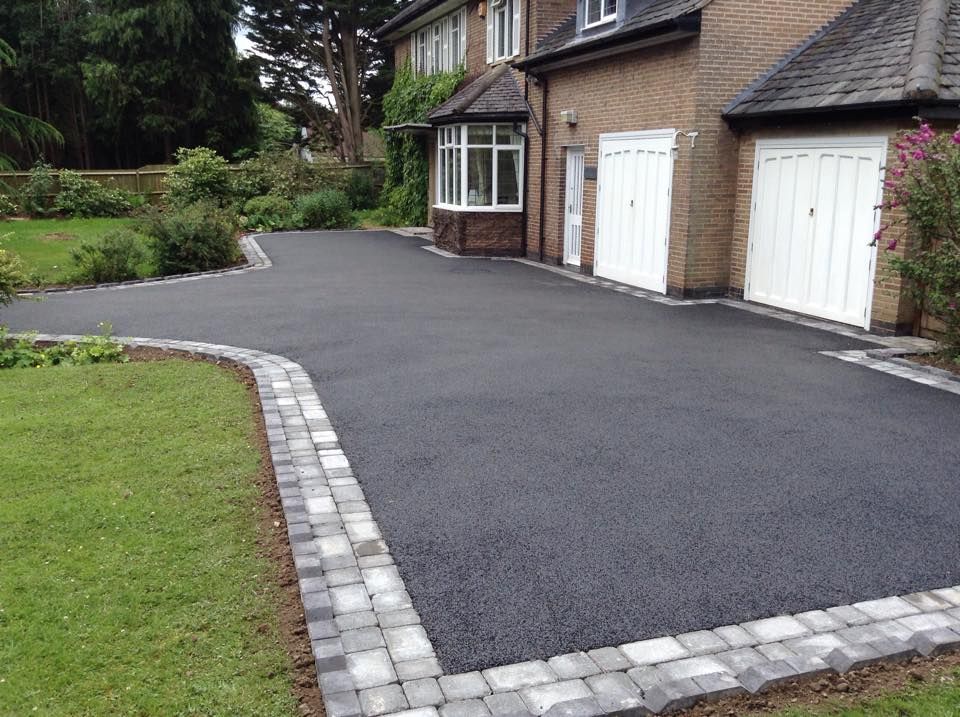
Gravel is easy to install on your own. If you have a commercial driver’s license, you can complete the entire project without any outside help. If not, the only “professional” you need to retain is the person who drives the gravel truck up your driveway.
Paving an asphalt or concrete driveway is technically possible without professional help. But it’s a far more complex, risky affair. I certainly wouldn’t try it, nor would I recommend it to anyone without proper training.

Now for the bad news: the downsides of gravel driveways.
Gravel lacks the aesthetic appeal of paving stones and the crisp, uniform appearance of asphalt and concrete. It’s cheap, and it looks it. If you’re looking to improve your home’s curb appeal, and especially if you’re preparing to list your house for sale, a more expensive option may be a worthwhile investment.
Pro Tip: Looking for DIY projects that actually pay for themselves over time? Check our roundup of easy home improvements that help reduce homeownership costs.
Sad to say, gravel driveways aren’t popular with everyone.
If you live in an upscale community or belong to a homeowners’ association, your driveway project may be restricted or stymied altogether by legally enforceable covenants (regulations). Your HOA’s bylaws might mandate a certain type of driveway surface, for instance – say, black asphalt or stone pavers. Before you spend any money on your gravel driveway project, make sure it won’t go to waste.
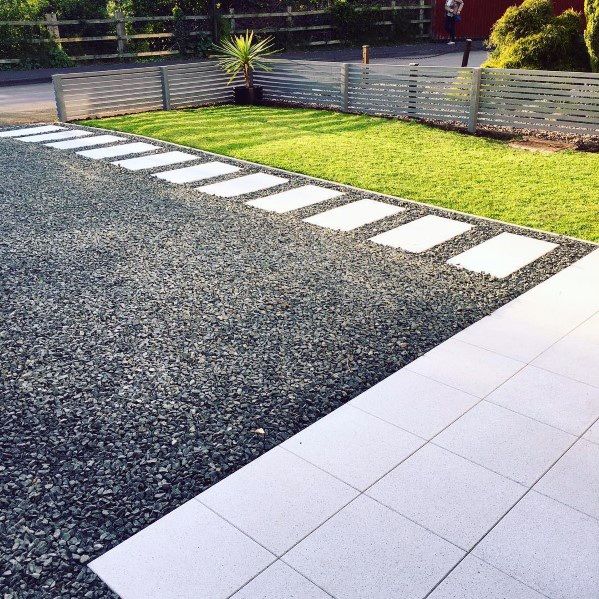
Dump trucks are big. When they dump their loads, they get even bigger. Actually, they get taller – their beds lift up to create a slope down which whatever they’re carrying can slide. With its tailgate fully engaged, the typical dump truck grows to 16 feet tall. That’s level with your second-story windows.
On narrow driveways with side or overhead obstructions, taking a gravel delivery is harder than it should be. This is common in densely built cities, where driveways directly abut houses and aren’t built for anything wider than a standard passenger car. Overhanging eaves further complicate matters – a driveway that’s wide enough to handle a dump truck at ground level might not have enough clearance 10 or 15 feet overhead.
If you have a narrow lot, you’ll likely have to block off a portion of your street and get the gravel dumped there. That may require you to pull a permit (or at least notify your municipal government) and will definitely create a lot more work for you, since you’ll need to schlep the gravel up to where it’s actually needed.
Gravel driveways are difficult to shovel by hand and even tougher to plow. We’ve given up trying to clear our gravel driveway completely. I basically scrape as much snow as I can off the top and trust our newish tire treads to claw their way up the slope.
Our driveway is short, and its slope is brief enough that we can power our way up without much trouble. Homeowners with longer, steeper driveways aren’t so lucky. If springing for asphalt means you’ll actually be able to make it up your hill in the winter, it might be worth the added investment.
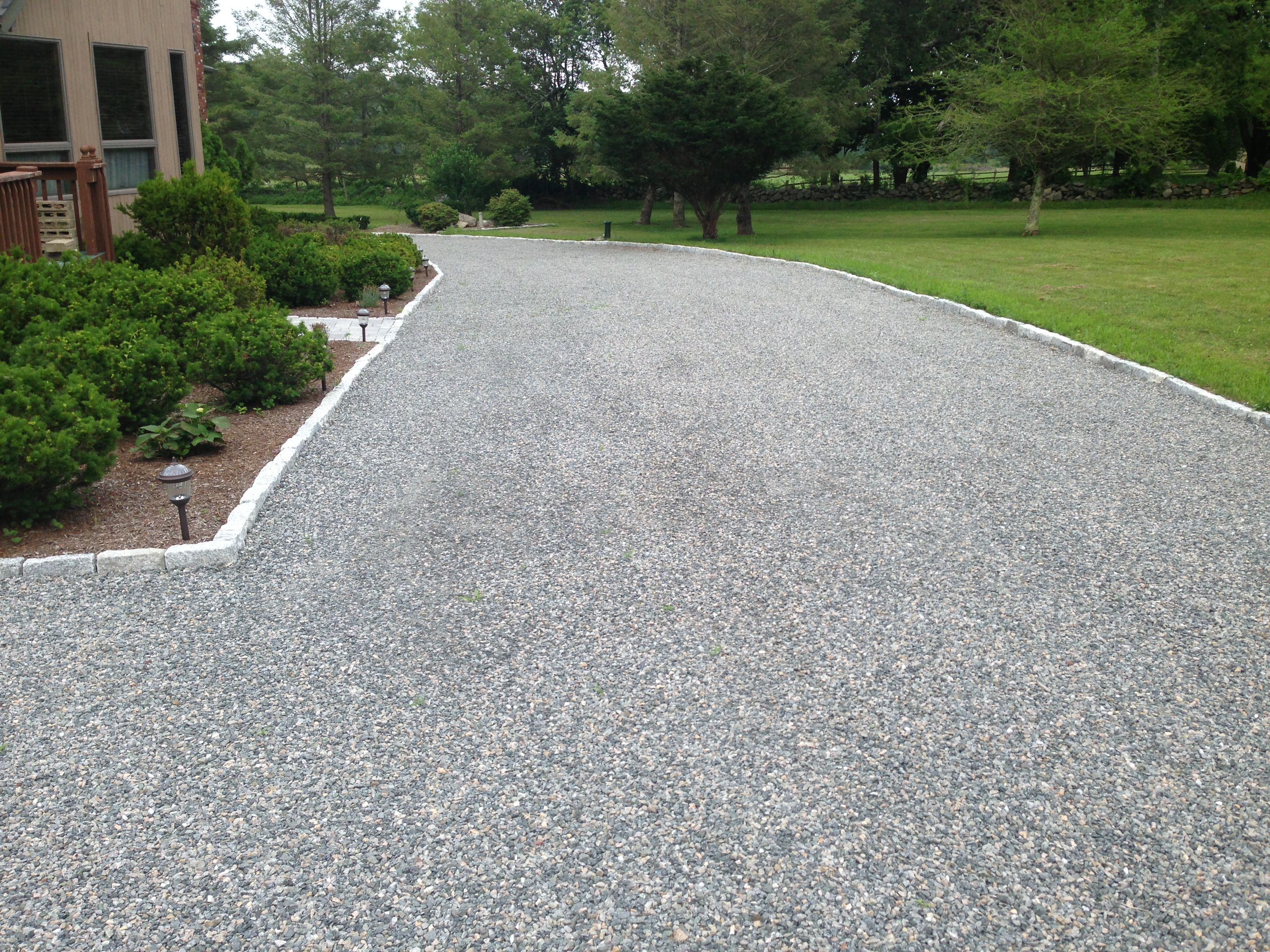
Careful grading can keep your gravel driveway relatively even for a while, but the killer combination of gravity and heavy use will win out eventually. Wheels inevitably produce ruts and bumps, which get ever sloppier over the years as the driveway’s gravel thins.
Before we resurfaced it, our gravel driveway had two deep, parallel scores left by thousands of vehicle transits. The thin gravel cover wasn’t adequate to keep those scores mud-free after rains. In winter, they’d fill with ice and snow for months on end, and take weeks to drain following the spring thaw. I can’t tell you how sick we got of dodging mud puddles, and how happy we are with our fresh, reasonably clean gravel surface today.